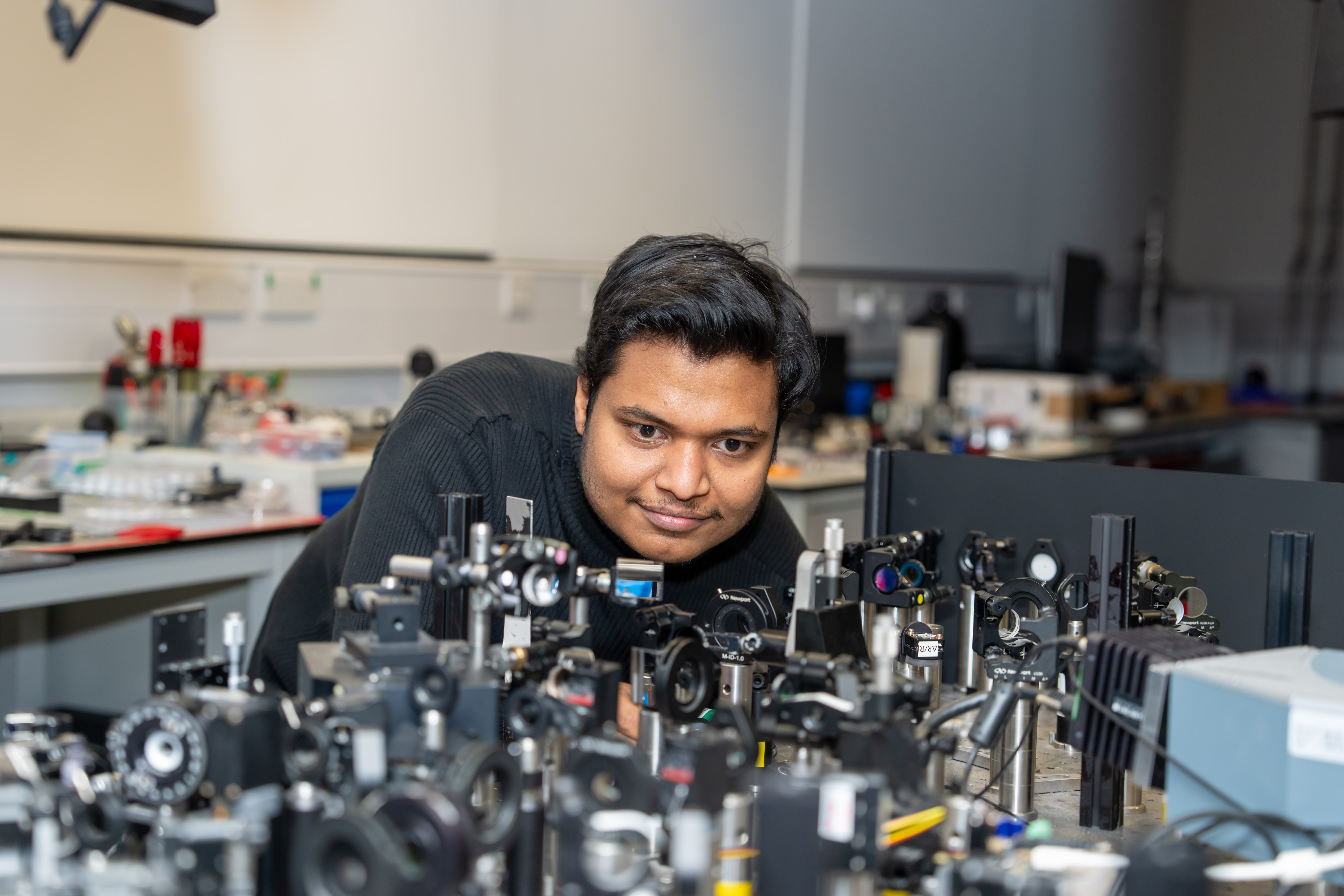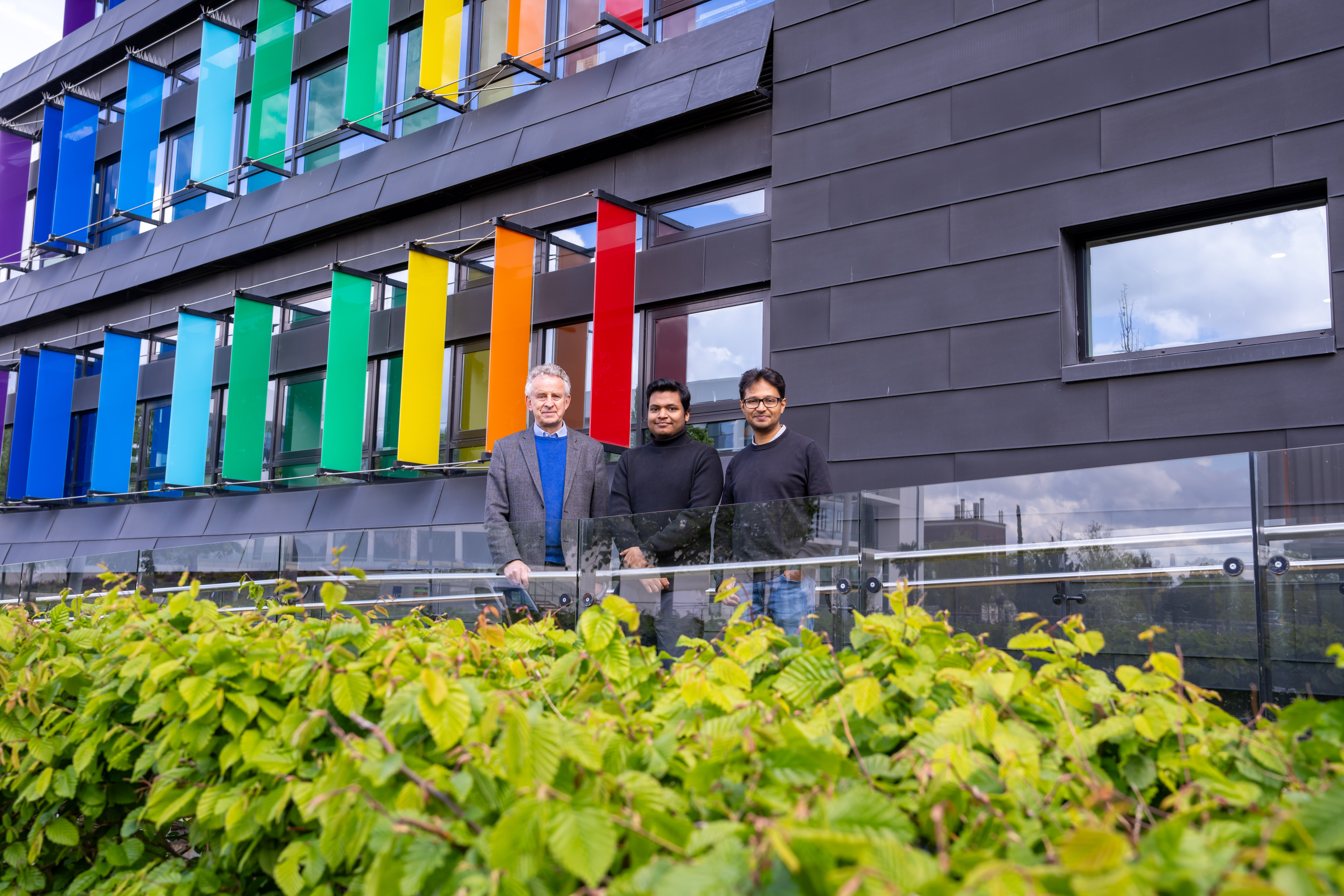The new ‘recipe for light-emitting molecules’ that rewrites a fundamental law of physics
“This research has a huge implication for three technologies – organic solar cells, OLED display technology and bioimaging”
Cambridge scientists have designed a molecule ‘recipe’ that could advance display and solar technology as we know it – from medical imaging equipment and smartphones to how sunlight is converted into electricity.
For more than 50 years, the energy gap law has been a key theory to understand and model the non-radiative loss pathways in organic molecules. Scientists established that organic molecules, especially with the lower energy gap between initial and final states involved in fluorescence, suffer from non-radiative loss – which leads to energy loss. This theory set an upper limit for designing efficient light emitters.
A study published today (8/5/24) in Nature reveals exactly how to design efficient molecular systems that will reliably produce organic light-emitting diodes (OLEDs) in display technology and solar cells. Researchers have found a way to decouple electrons from vibrations in organic material – previously thought to be impossible – to prevent energy loss.
Pratyush Ghosh, a PhD student in Physics at the Cavendish Laboratory and St John’s College, University of Cambridge, and first author of the study, said: “This research acts as a ‘recipe’ for light-emitting molecules.
“It reveals the underlying rules to optimise the efficiency of luminescence from molecular semiconductors. This has a huge implication for three technologies – organic solar cells, OLED display technology and bioimaging.”

Often referred to as molecular vibrations, the motion of atoms act like tiny springs, undergoing periodic motion. For electrons in these systems, being joined with these vibrations means they are constantly in motion too, dancing to the tune of the atoms, on timescales of a millionth of a billionth of a second.
The coupling of such periodic atomic motion to the electron opens up unwanted non-radiative loss of energy. The Cambridge researchers have established two new design principles for decoupling, or separating, electronic motions from the vibrations in a molecule.
To demonstrate these design principles, they designed a series of efficient near-infrared emitting (680-800nm) molecules. In these molecules, energy losses resulting from vibrations – essentially, electrons dancing to the tune of atoms – were more than 100 times lower than in previous organic molecules.
“In the past decade, chemists and material scientists all over the globe have discovered molecules that are really efficient; they can emit bright light, and they work well in a display technology device. However, the reason why these molecules fundamentally behave so well, even though they violate the energy gap law, has been unknown until now,” said Ghosh.
“We have discovered how these systems defy the empirical and theory-driven laws of physics to create such efficient devices bypassing the vibrationally coupled loss pathways, and we have proposed instructions for recreating next generation molecules.”
“The design principles could have a profound positive impact on this branch of biology and medical science”

The research builds upon the work of Professor Ahmed Zewail, who won the 1999 Nobel Prize in Chemistry for his study of ‘femtosecond’ chemical reactions. Compressing laser light in ultrashort time scales, as short as a millionth of a billionth of a second, enabled Cambridge scientists to see those incredible fast atomic motions and uncover the ‘recipe’.
The discovery has direct application in the display technology of devices such as mobile phones and smart TVs. Senior co-author Professor Sir Richard Friend, Director of Research at the Department of Physics and a Fellow of St John’s College, said: “Organic LED displays for phones, computers and TVs generate the three primary colours of LED – red, blue and green – to create the full colour spectrum. With our design for molecular systems, the displays can be even brighter and sharper.”
Researchers across the globe have been working on how to enhance organic solar cells (OSC) owing to their remarkable features such as adjustability, flexibility, cost-effectiveness in manufacturing and suitability for indoor use.
“An important area of research in organic photovoltaics, or solar cells, is to suppress the non-radiative loss pathways due to the coupling of electrons to vibrations in photo-excited molecules. We are on an extremely interesting trajectory to see if the outcome of the current discovery that targets this particular problem can contribute to solve those loss pathways,” said Ghosh.
“The goal is to surpass the 20 per cent efficiency threshold, paving the way for widespread adoption of OSCs as a sustainable green energy solution.”
The findings also hold significant promise for bioimaging, specifically in cell imaging where fluorescent tags are pivotal. This area of research is crucial for drug discovery and understanding disease mechanisms.
Ghosh added: “The suggested design principles could have a profound positive impact on this branch of biology and medical science.”
Professor Akshay Rao, Professor of Physics at the Cavendish Laboratory and former St John’s College Research Associate, who led the research, said: “These molecules have a wide range of applications today. The challenge now is to translate our discovery to make better technologies, from enhanced displays to improved molecules for bio-medical imaging and disease detection.”
- Pratyush Ghosh et al, ‘Decoupling excitons from high-frequency vibrations in organic molecules’ (Nature, 8/5/24), DOI 10.1038/s41586-024-07246-x
Banner image: artist's illustration of an organic molecule's light emission property modulated by quantum dance of the atoms. Image credit: Pratyush Ghosh.
Published 8/5/2024